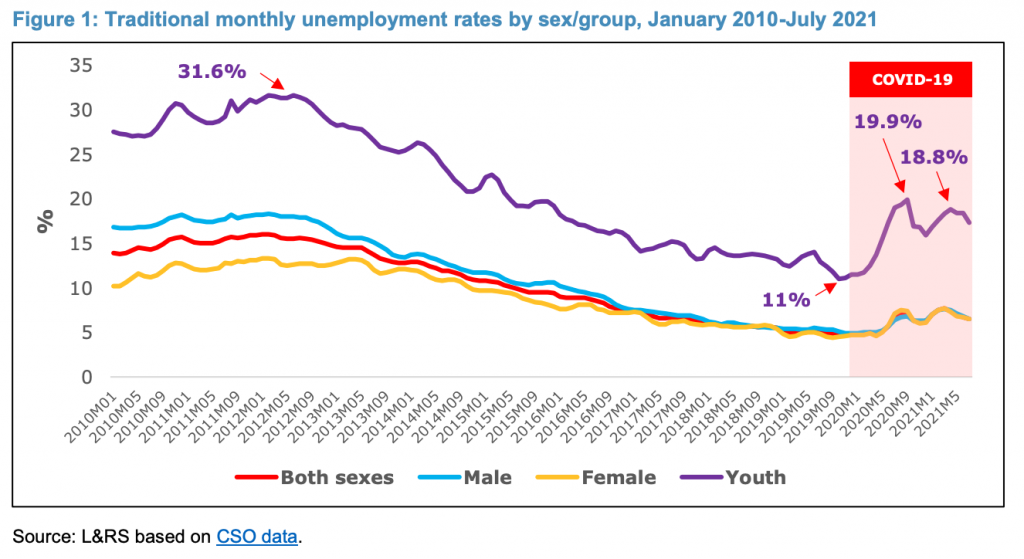
| Statement | Explanation: Consequences of high youth unemployment |
| Increased government (current) expenditure | Increased government (current) expenditure |
| Reduced government (current) revenue | With fewer people working the government will collect less in both direct and indirect tax revenue. |
| Loss on return on investment in education ‘Lost generation’ | With young people not contributing to society the state loses out on the taxpayers’ investment in their education. |
| Emigration | With less job opportunities available some people who are able may consider emigrating if job opportunities exist elsewhere. |
| Social costs to society | Crime, vandalism and anti-social behaviour may increase among young people who are bored and have no stake in society. This could increase policing costs for the government. |
| Increased demand for places in third level | With employment prospects poor those who had not availed of third level education may now seek that opportunity putting pressure on the resources of both the colleges and the state (for finance) |
Policies/ measures to reduce youth unemployment
- Provide more opportunities for education / training
Universities / ITs/ Solas could ensure that good quality education and skills training is provided to meet the demands of certain growth sectors in the economy.
- Subsidised work placements/internships
The government could give a welfare ‘top-up’ to individuals willing to do work experience and offer placements with companies to develop their skills and experience.
- Reduce the minimum wage
This will reduce costs for businesses and may encourage them to hire extra workers.
- More school based vocational training
Review the curriculum at second level to reflect the current / future needs of the labour market and thus help address the labour shortages.
- Policies to encourage geographical mobility
This may allow young people to take up work in other geographical locations thus increasing employment e.g. subsidised accommodation; travel expenses.
- Reduce rates of social welfare for ‘young’ unemployed
The differential between the social welfare rate and the wage rate will then be increased and this may encourage more young people into the labour market.
